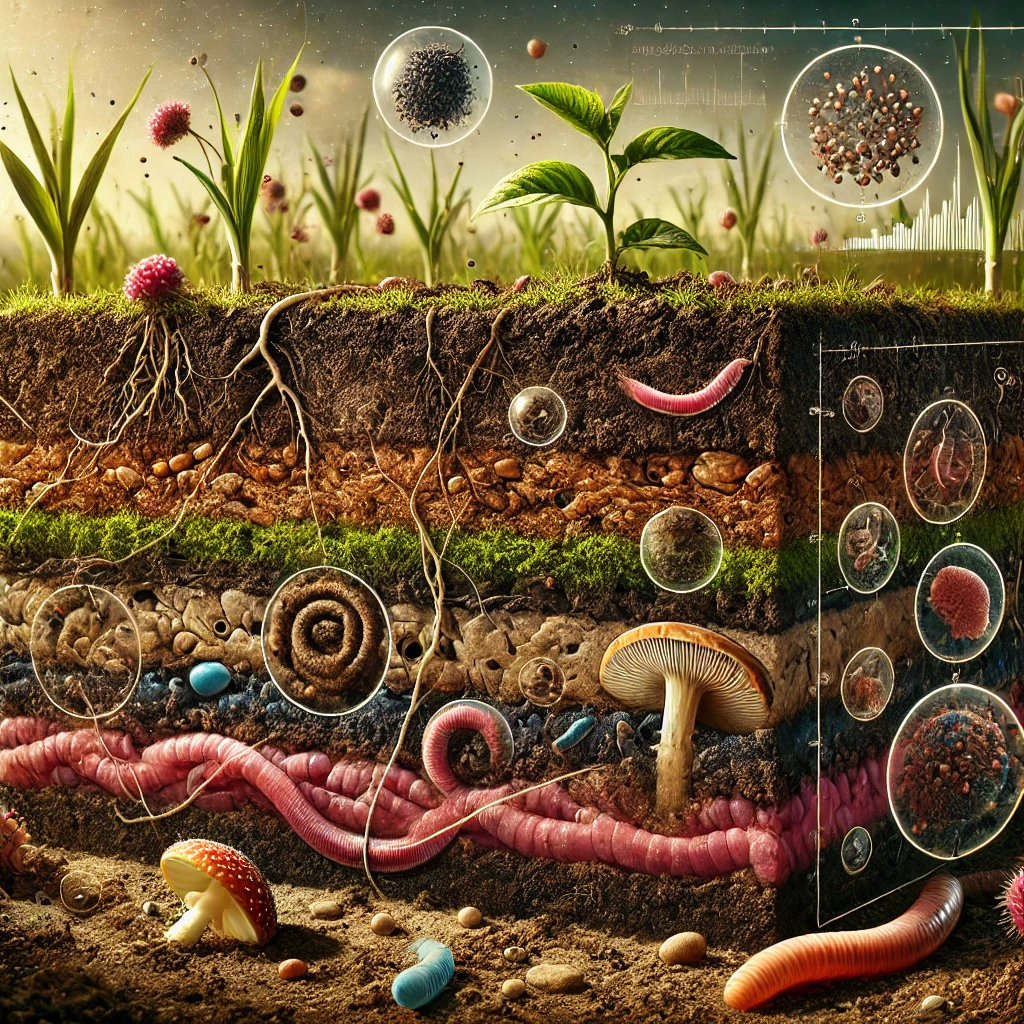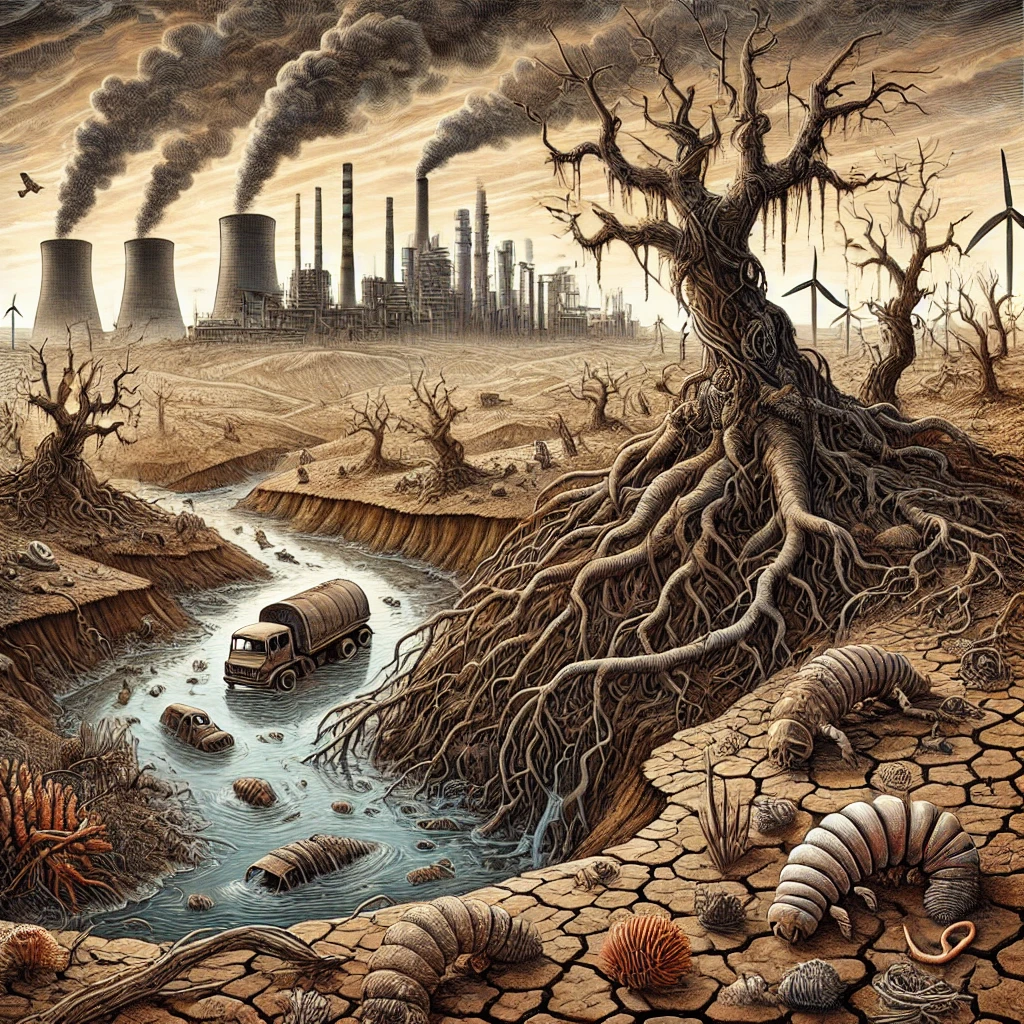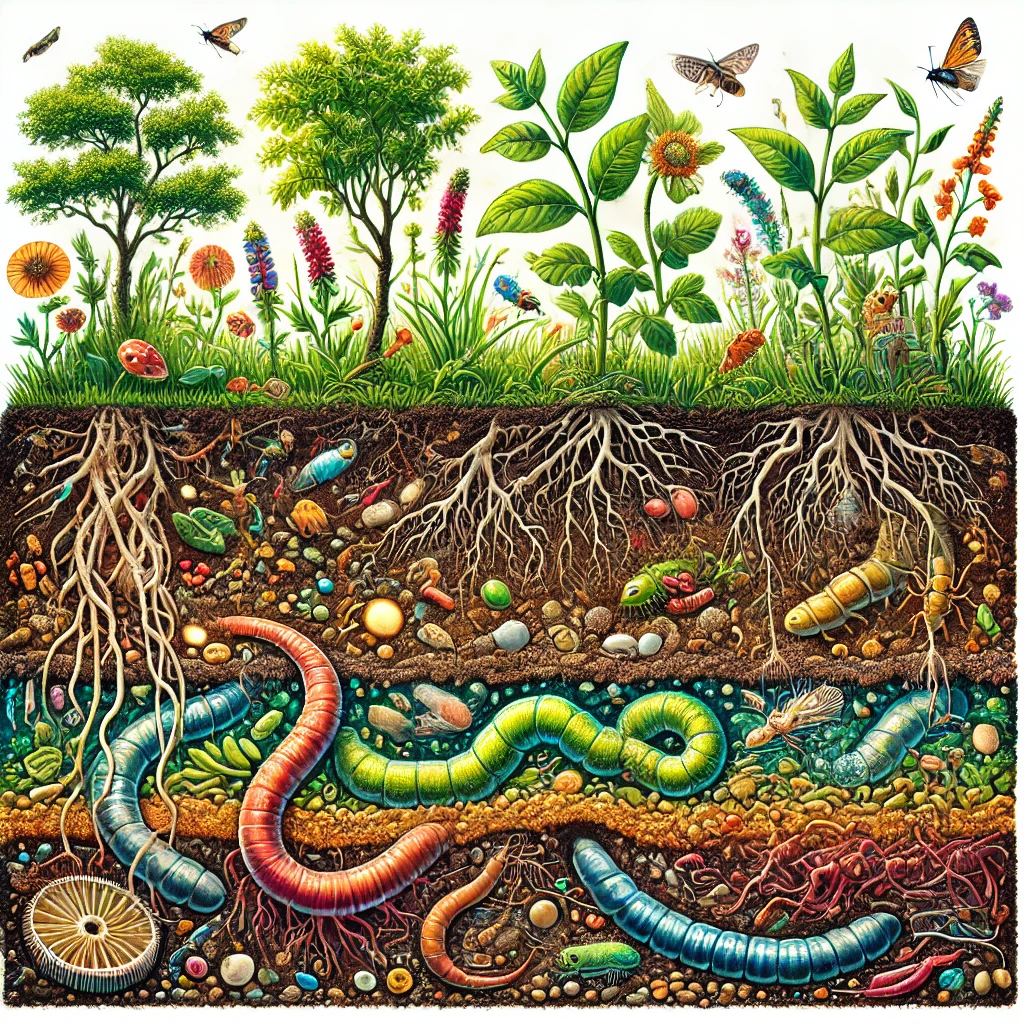The Hidden World Beneath Our Feet
Understanding Soil Science and Microbial Biodiversity in Permaculture

Introduction
Soil is more than just dirt—it is a living, dynamic ecosystem that serves as the foundation of all terrestrial life. Beneath our feet, a complex web of organisms, minerals, and organic matter interacts in ways that influence plant growth, water cycles, and even climate stability. Among the most crucial yet often overlooked components of soil are the microbes—bacteria, fungi, archaea, and other microorganisms—that drive essential processes such as nutrient cycling, organic matter decomposition, and disease suppression. Understanding soil science and the role of microbial biodiversity is vital for sustainable agriculture, environmental conservation, and overall ecosystem health.
What Is Soil Science?
Soil science is the study of soil as a natural resource, encompassing its formation, classification, properties, and interactions with plants and the environment. Soil is composed of four main components:
- Minerals: Sand, silt, and clay that influence soil texture and structure.
- Organic matter: Decomposed plant and animal residues that provide nutrients.
- Water: Carries dissolved nutrients and sustains biological activity.
- Air: Essential for root respiration and microbial activity.
The Role of Microbial Biodiversity in Soil Health
1. Nutrient Cycling
Microbes break down organic matter and release essential nutrients such as nitrogen, phosphorus, and potassium, making them available for plant uptake. Nitrogen-fixing bacteria, for example, convert atmospheric nitrogen into forms that plants can use.
2. Organic Matter Decomposition
F Fungi and bacteria play a key role in decomposing dead plant material, enriching the soil with humus—a stable form of organic matter that improves soil structure and water retention.
3. Disease Suppression
A diverse microbial community suppresses soil-borne pathogens by outcompeting harmful microbes and producing natural antibiotics that inhibit disease-causing organisms..
4. Soil Structure Improvement
Mycorrhizal fungi form symbiotic relationships with plant roots, extending their reach for nutrients while stabilizing soil particles. Bacteria produce glues like polysaccharides that enhance soil aggregation, reducing erosion and compaction.
5. Carbon Sequestration
Soils act as major carbon sinks, storing organic carbon through microbial activity. Healthy, microbially rich soils can mitigate climate change by capturing and storing atmospheric carbon.
Threats to Soil Microbial Biodiversity

- Overuse of chemical fertilizers and pesticides: These disrupt microbial balance and reduce beneficial populations.
- Monoculture farming: Limits microbial diversity by depleting soil nutrients and favoring specific microbial communities.
- Soil erosion and compaction: Destroy microbial habitats and reduce aeration.
- Deforestation and urbanization: Strip soils of organic matter and disrupt microbial ecosystems.
Modern agricultural practices and land-use changes pose significant threats to soil microbial life. The following factors contribute to the decline of soil biodiversity:
Enhancing Soil Microbial Health and Biodiversity
Permaculture offers regenerative solutions for restoring soil life:
- Composting, Vermicomposting, and Organic Amendments: Adding compost, mulch, and cover crops enhances microbial diversity and nutrient cycling. Compost provides beneficial microbes and organic matter that support microbial communities, improving soil fertility and structure. Vermicomposting, or composting with worms, further enhances microbial activity by accelerating organic matter decomposition and enriching soil with worm castings, which contain high concentrations of beneficial microbes and nutrients.
- Reduced Tillage and No-Till Farming: Minimizing soil disturbance preserves soil structure and microbial habitats. Tillage disrupts microbial communities and exposes organic matter to oxidation, reducing soil carbon levels. No-till practices help retain soil moisture and promote beneficial fungi and bacteria.
- Crop Rotation and Polyculture: Growing a variety of crops supports diverse microbial communities and prevents soil depletion. Different plant species interact with microbes uniquely, fostering a richer microbial ecosystem that improves nutrient availability and disease resistance.
- Use of Biofertilizers and Microbial Inoculants: Introducing beneficial microbes such as mycorrhizal fungi, nitrogen-fixing bacteria, and phosphate-solubilizing bacteria can restore depleted soils and enhance plant-microbe interactions. These biofertilizers improve nutrient uptake, boost plant immunity, and enhance soil health.
- Cover Crops and Green Manure: Planting cover crops like clover, legumes, and rye improves soil microbial life by maintaining continuous root exudates that feed beneficial microbes. Green manure crops can be plowed into the soil to provide fresh organic material that microbes decompose, enriching the soil.
- Integrating Livestock: Grazing animals can enhance soil biology by contributing manure rich in organic matter and beneficial microbes. Managed rotational grazing prevents overgrazing and encourages healthy plant growth, which supports a thriving soil ecosystem.
- Avoiding Chemicals: Reducing the use of synthetic fertilizers, pesticides, and herbicides helps maintain microbial balance. Organic farming practices encourage beneficial microbes and reduce toxic residues that harm soil biology.
- Water Management and Soil Moisture Conservation: Using swales, keyline design, and mulch to retain moisture. Healthy microbial communities require adequate moisture. Drip irrigation, mulching, and contour farming help retain soil moisture and prevent desiccation of microbial habitats. Overwatering and poor drainage should also be avoided, as anaerobic conditions can favor harmful pathogens.
The Importance of Biodiversity in Soil Ecosystems
- Increased Soil Resilience: Diverse microbial communities create a buffer against environmental stresses such as drought, extreme temperatures, and soil degradation.
- Enhanced Plant Health: Different microbes contribute to disease resistance, improved nutrient absorption, and better overall plant vigor.
- Greater Carbon Storage: A biodiverse soil retains more organic matter, enhancing carbon sequestration and contributing to climate change mitigatione
- Efficient Nutrient Cycling: A greater variety of microbes ensures balanced nutrient cycling, reducing the need for synthetic fertilizers.
- Improved Ecosystem Stability: Diverse microbial networks support higher trophic levels, fostering robust soil food webs that sustain plant and animal life.

Conclusion
Healthy soils are the foundation of sustainable ecosystems, and microbial biodiversity plays a critical role in maintaining soil function and resilience. By implementing regenerative soil management practices, we can enhance microbial life, improve soil fertility, and promote environmental sustainability. Investing in soil health is investing in the future of our planet. Protecting and nurturing soil microbial biodiversity is not just a scientific necessity—it is a global imperative for food security, climate resilience, and ecological balance.
References
- Brussaard, L., P.C. de Ruiter, and G.G. Brown. "Soil biodiversity for agricultural sustainability." Agriculture, Ecosystems & Environment, vol. 121, no. 3, 2007, pp. 233-244.
- Giller, K.E., et al. "Agricultural intensification, soil biodiversity and agroecosystem function." Applied Soil Ecology, vol. 6, no. 1, 1997, pp. 3-16.
- van der Heijden, M.G.A., R.D. Bardgett, and N.M. van Straalen. "The unseen majority: soil microbes as drivers of plant diversity and productivity in terrestrial ecosystems." Ecology Letters, vol. 11, no. 3, 2008, pp. 296-310.